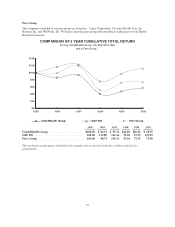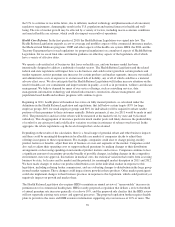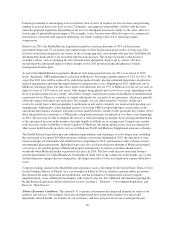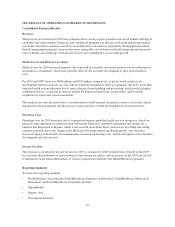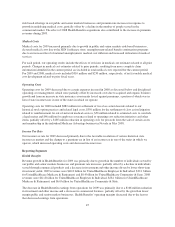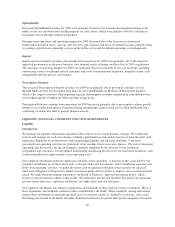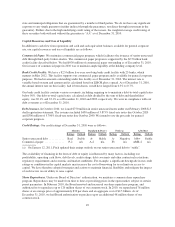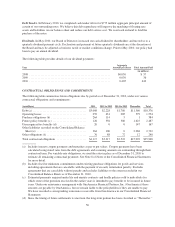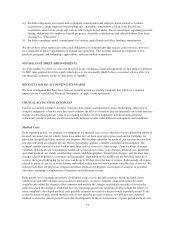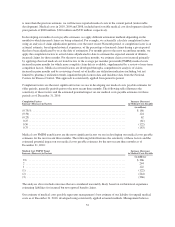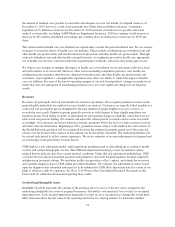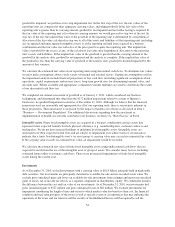United Healthcare 2010 Annual Report Download - page 47
Download and view the complete annual report
Please find page 47 of the 2010 United Healthcare annual report below. You can navigate through the pages in the report by either clicking on the pages listed below, or by using the keyword search tool below to find specific information within the annual report.risk-based offerings in our public and senior markets businesses and premium rate increases in response to
growth in underlying medical costs, partially offset by a decline in the number of people served in the
commercial market. The effect of 2008 Health Benefits acquisitions also contributed to the increase in premium
revenues during 2009.
Medical Costs
Medical costs for 2009 increased primarily due to growth in public and senior markets risk-based businesses,
elevated medical costs due to the H1N1 influenza virus, unemployment-related benefit continuation programs
due to an increased level of national unemployment, medical cost inflation and increased utilization of medical
services.
For each period, our operating results include the effects of revisions in medical cost estimates related to all prior
periods. Changes in medical cost estimates related to prior periods, resulting from more complete claim
information identified in the current period, are included in total medical costs reported for the current period.
For 2009 and 2008, medical costs included $310 million and $230 million, respectively, of net favorable medical
cost development related to prior fiscal years.
Operating Costs
Operating costs for 2009 decreased due to certain expenses incurred in 2008 as discussed below and disciplined
operating cost management, which were partially offset by increased costs due to acquired and organic business
growth and from an increase in state insurance assessments levied against premiums, a portion of which was in
lieu of state income taxes in one of the states in which we operate.
Operating costs for 2008 included $882 million for settlement of two class action lawsuits related to our
historical stock option practices and related legal costs, $350 million for the settlement of class action litigation
related to reimbursement for out-of-network medical services, $50 million related to estimated costs to conclude
a legal matter and $46 million for employee severance related to operating cost reduction initiatives and other
items, partially offset by a $185 million reduction in operating costs for proceeds from the sale of certain assets
and membership in the individual Medicare Advantage business in Nevada in May 2008.
Income Tax Rate
Our income tax rate for 2009 decreased primarily due to the favorable resolution of various historical state
income tax matters and the change to a premium tax in lieu of an income tax in one of the states in which we
operate, which increased operating costs and decreased income taxes.
Reporting Segments
Health Benefits
Revenue growth in Health Benefits for 2009 was primarily due to growth in the number of individuals served by
our public and senior markets businesses and premium rate increases, partially offset by a decline in individuals
served through commercial products and a decrease in investment and other income driven by lower short-term
investment yields. 2009 revenues were $40.8 billion for UnitedHealthcare Employer & Individual; $32.1 billion
for UnitedHealthcare Medicare & Retirement; and $8.4 billion for UnitedHealthcare Community & State. 2008
revenues were $41.8 billion for UnitedHealthcare Employer & Individual; $28.1 billion for UnitedHealthcare
Medicare & Retirement; and $6.0 billion for UnitedHealthcare Community & State.
The decrease in Health Benefits earnings from operations for 2009 was primarily due to a $166 million reduction
in investment and other income and a decrease in commercial business, partially offset by the growth in lower
margin public and senior markets businesses. Health Benefits’ operating margins decreased due to the factors
that decreased earnings from operations.
45


